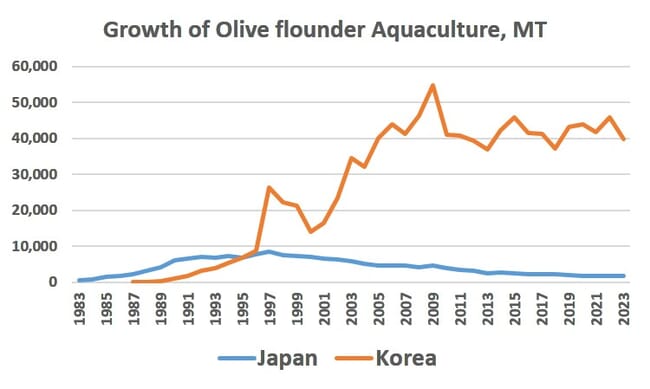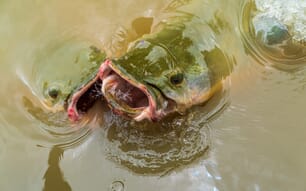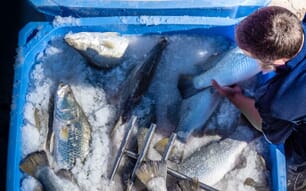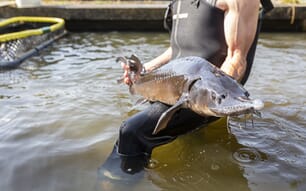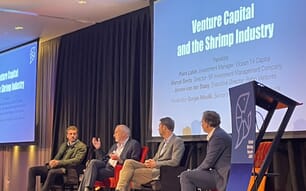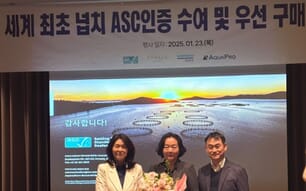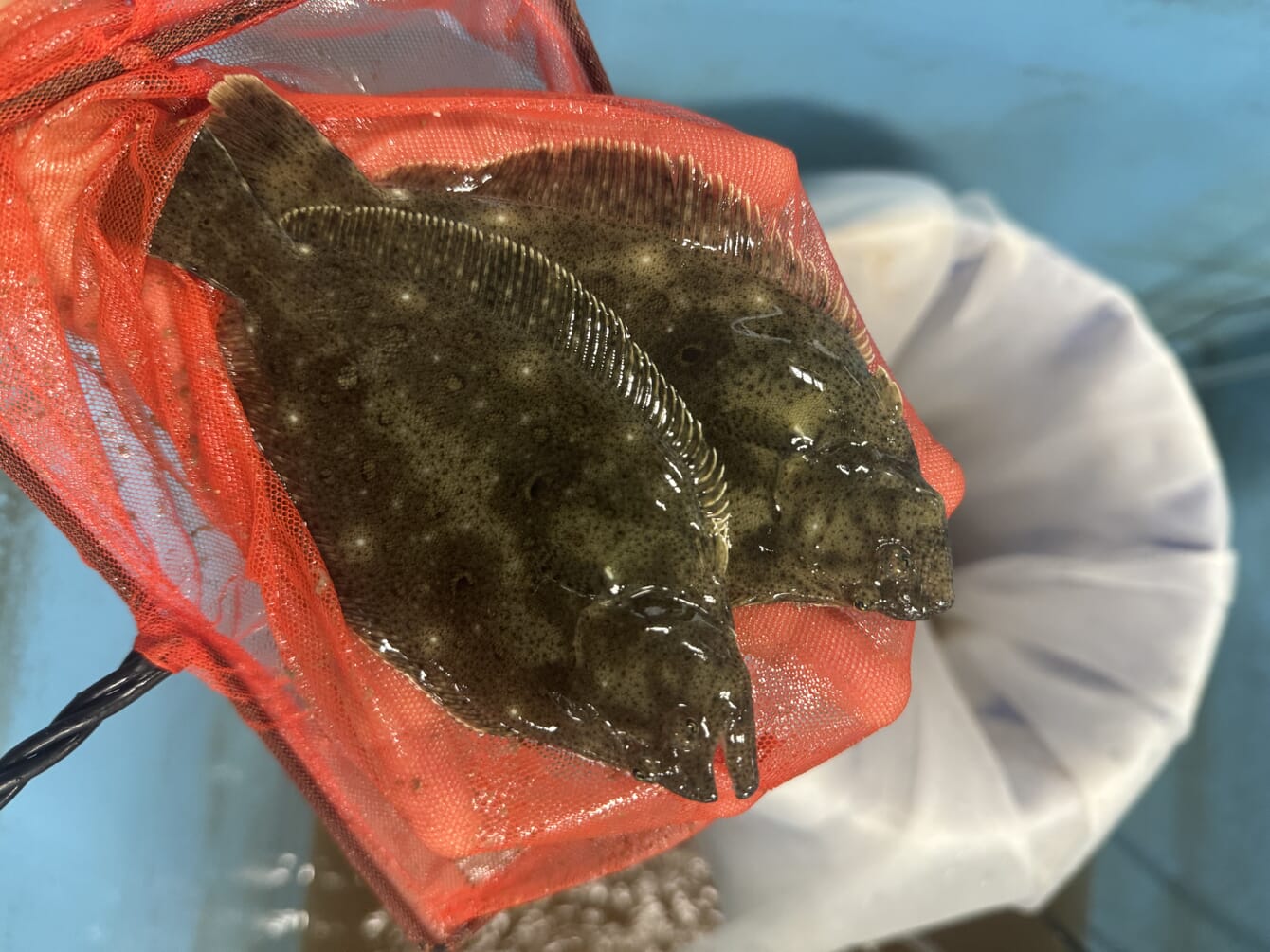
© Kentucky State University
The olive flounder, Paralichthysolivaceus, has historically been a sought-after fish from the coastal waters of Japan, China, and Korea. Also known as the Japanese flounder, and the first artificial spawning of the species was reported by Japan’s Kindai University in 1966.
Almost two decades later, the first artificial spawning in South Korea took place in 1984 at the National Fisheries Research and Development Institute (NFRDI). By 1986 a private Korean hatchery initiated seasonal production of fingerlings, and by 1989 innovative methods were being employed to produce olive flounder seed year-round throughout the country.
Producers were attracted by the high prices the species commanded in the marketplace, as well as the good growth it exhibited (reaching 800 to 1200 grams in 18 months) compared to many other flatfishes and because it also tolerated a wide range of salinities. As a result, flounder farming expanded rapidly. By 2009 South Korea was producing over 54,000 tonnes annually, and in recent years the country has accounted for over 70 percent of global production.
This discussion will focus on the South Korean industry, where the outlook has become somewhat complicated. A decade ago industry observers were in general agreement that the sector was poised for significant growth, but this is yet to materialise: in spite of increased feed consumption by flounder producers, production levels did not grow significantly between 2020 and 2024. Harvests last peaked in 2022 at roughly 46,000 tonnes, and subsequently declined to approximately 40,000 tonnes in 2024. However, as a result of increasing demand, the value of the harvest steadily increased from USD $390 million to $498 million over the same period.
Trends and practices
Larval rearing procedures for P. olivaceus are similar to those of many other marine species. Hatcheries use mature (3 to 5 year old) broodstock that produce buoyant eggs. Hatching rates are high under low-light conditions, and larvae are fed algae, rotifers and artemia prior to weaning. Migration of the right eye to the left side of the head occurs three to four weeks after hatching, and around this time the fish adopt a bottom-dwelling lifestyle. Larval survival to the juvenile stage is typically around 80 percent, and water temperature is maintained at 17o C during this period to increase the proportion of females (temperatures above 20o C will result in a high proportion of males). Grading is crucial in the hatchery and nursery stages.
In nature, the olive flounder’s diet consists of invertebrates and smaller fish. Extruded feed currently accounts for only 10 percent of the industry’s consumption, but as a result of increased focus on feed efficiency and water quality management, it’s steadily gaining ground on the moist feeds traditionally used by growers.
Temperature is actually a key factor throughout the olive flounder production cycle. The optimal range for grow-out operations is 15o to 20o C, with lower temperatures slowing growth rates and higher ones increasing problems with diseases and environmental conditions. Photoperiod manipulation is also an important management tool – both to induce captive spawning in hatchery facilities and to delay maturation in grow-out tanks. In order to raise their fish to larger sizes, producers must prevent maturation-associated mortality that typically occurs during the first spawning season.
In South Korea, roughly half of all olive flounder aquaculture has historically taken place in Jeju-do. Other important areas include Incheon, Jeollanam-do and Chungccheongnam-do, and in recent years Jeonnam has rivalled Jeju in terms of total production. Some exporters in these regions ship live fish to ports as far away as the west coast of North America, but most producers and brokers focus on domestic and regional markets.
Several notable trends in olive flounder production practices have been apparent in Korea over the years. While cage farming in marine waters is practiced on a very limited basis, most commercial production now takes place in land-based flow-through systems in coastal regions, often utilising seawater wells. This practice has come under criticism, however, due to concerns over nutrient discharges and excessive energy requirements. Stocking densities in these systems can reach 20 kg or more per m2, generating significant volumes of organic-laden effluents.
One particularly concerning trend involves steadily increasing mortality losses during the production cycle. In 2020, over half of the country’s farms reported average mortality rates above 20 percent, and by 2022 this proportion had increased to three out of every four producers. While it is possible that predominant pathogens may be adapting to culture systems, some observers point out that Korean farmed olive flounder stocks are genetically similar due to shared breeding history, perhaps increasing susceptibility to disease. Genetic selection to date has focused on growth rather than survival traits.
But in spite of production challenges and mortality issues, the industry continues to be profitable in South Korea due to strong consumer demand, both domestically and in regional export markets. Roughly 70 to 80 percent of established farms report profits of USD $145,000 or more, but a number of the constraints described here have continued to hold back industry growth.
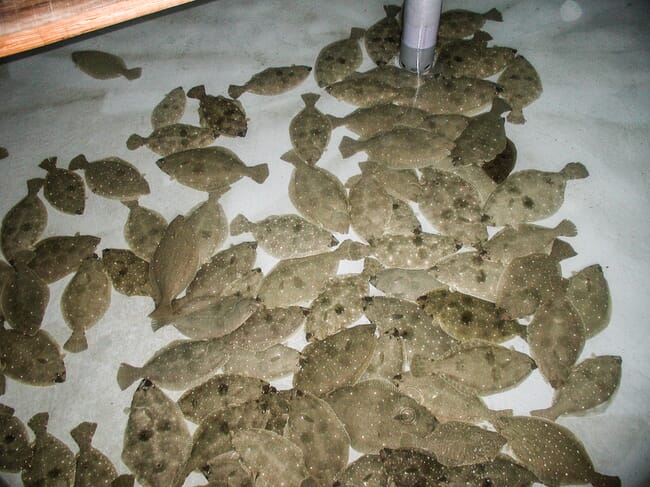
© BluGen
The future
Some industry observers still maintain the position that “if it’s not broken, don’t fix it.” Nonetheless, current industry statistics highlight the various constraints facing producers, and many government agencies and universities are actively addressing potential ways to move forward. Olive flounder will be particularly impacted by climate change and they are also particularly sensitive to handling injury. Nonetheless, innovative approaches to solving these and other issues are being developed across South Korea.
NFRDI has released an improved strain of olive flounder that grows up to 30 percent faster than traditional commercial stocks. There is also an increasing focus on adopting automation technologies to replace unskilled foreign labour. Breeding programmes have been established to improve disease resistance through individual and family selection. Several diseases are of particular concern for producers, including Edwardsiela tarda, viral haemorrhagic septicaemia, and Scuticociliates. Additionally, the myxozoan parasite Kudoa impacts post-harvest quality, causing rapid deterioration of muscle tissue – which complicates sales to the lucrative sushi market.
Interest in alternative production systems such as biofloc and modern RAS configurations has been increasing, with the goal of addressing sustainability, biosecurity, climate change and economic issues. In preliminary research and commercial trials in Korea, P. olivaceus has demonstrated excellent feed conversions and tolerance of high densities in RAS grow-out.
One South Korean company that sees a future in RAS-based olive flounder production is Raon Bada. The company has invested significantly, developing a pilot facility with a capacity of 40 tonnes per year. Earlier this year the company became the first ASC-certified olive flounder producer. Previous research, however, suggests that specific lines of fish may offer superior performance characteristics in RAS facilities, and these will probably be pursued as RAS production gains a foothold.
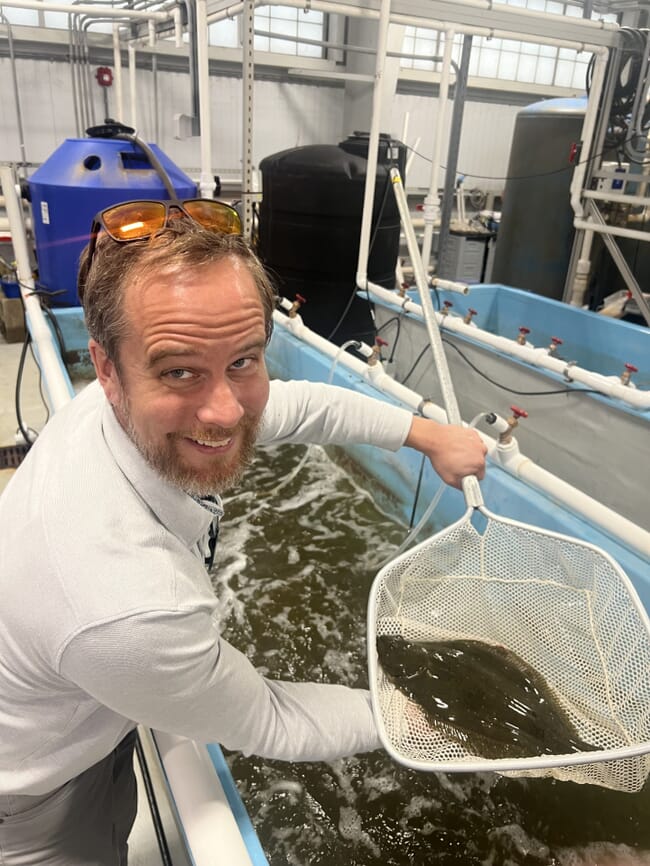
© Kentucky State University
The outlook for flounders beyond South Korea
In the US, flounders are widely recognised as high-value fishes. Fillet prices typically range from USD $19.8 to $70.4 per kg. Even higher prices are occasionally seen in high-end sushi restaurants and live markets in Asian communities. In many coastal regions native flounders have been overfished and subject to habitat degradation, further inflating prices in more traditional markets. And for the foreseeable future, the only feasible approach to farming marine finfish (including flounder) in the US will be RAS production. Fortunately, the olive flounder lends itself quite well to this type of industry.
Aquaculture researchers at the University of Miami have been culturing olive flounder for ten years, with several generations of fish being reared to market size or for breeding stock. And follow-up research focused on RAS management parameters is ongoing at Kentucky State University (KSU) in a project led by Dr Andrew Ray.
“Here at the KSU School of Aquaculture and Aquatic Science, we have consistently achieved a density of about 60 kg/m2 with the olive flounder. According to leading economists, marine RAS becomes feasible at densities of around 50 kg/m2, so we are in potential profit territory here, although investors should consider many factors,” he explains.
“Because the fish lays on the tank bottom most of the time, aeration or oxygenation can be very minimal. At high fish density, we generally turn oxygen on just prior to feeding and turn it off about 1.5 hours afterwards. The docile behaviour also makes the olive Flounder very feed efficient; we get an FCR of about 1:1.2. These issues, plus the fact that the fish is practically domesticated, has fast growth, and gets a high price in the market make the olive flounder a very attractive fish for commercialisation in the US,” he adds.
When one considers the on-going research underway in both South Korea and the US, a renaissance in olive flounder aquaculture may be just around the corner. I, for one, am looking forward to it. if it does occur.
